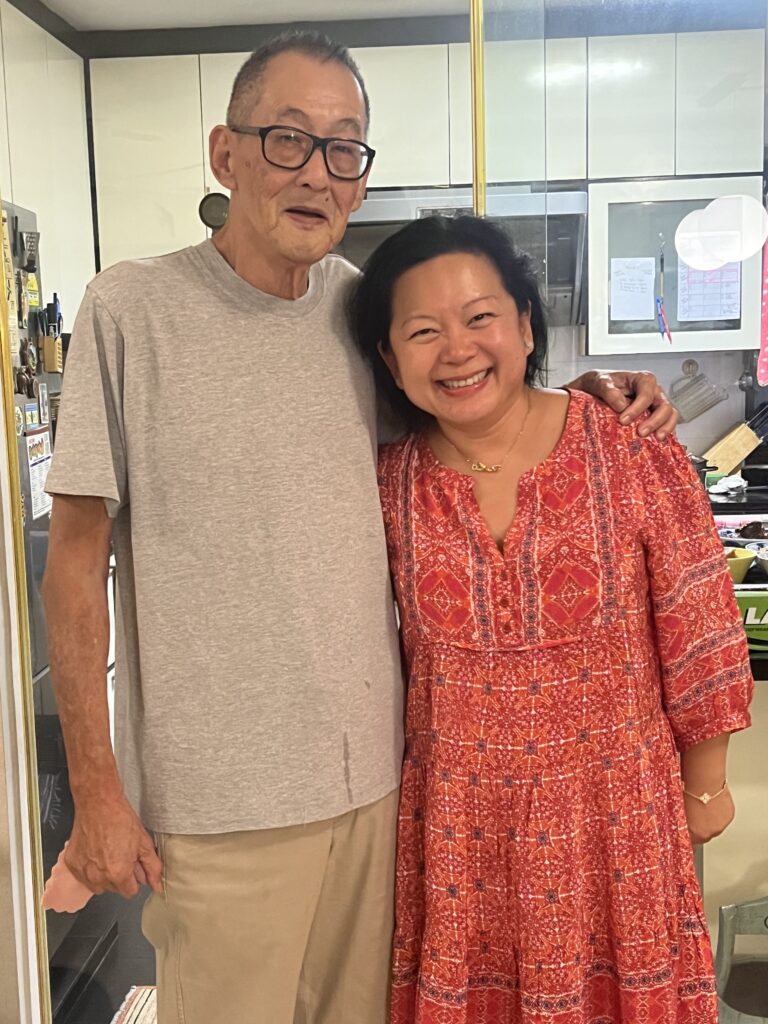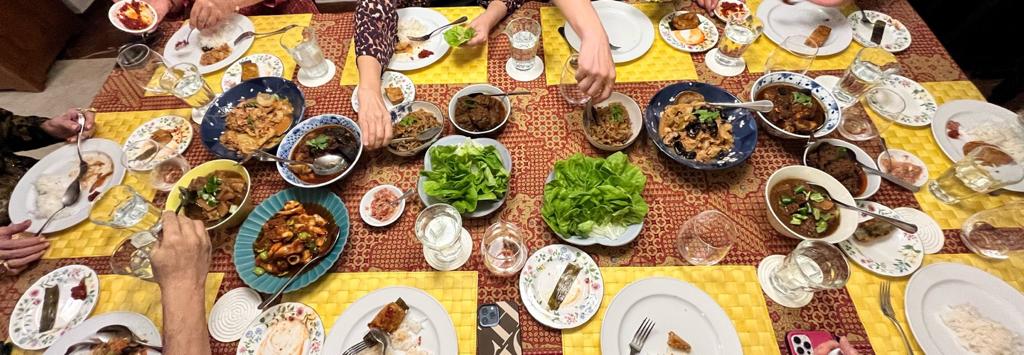I woke up on New Year’s Day trying to figure out what task it was that I was reminded to do. Aha! Jeffrey had texted me that slots would open up on Jan 1. He runs Nonya Bong – a popular Peranakan private dining that requires you to book months in advance. I had pursued him last August on behalf of a respected international food writer but to no avail. He was so booked, he had no time to accommodate an interview. My interest was piqued and I had to see what the rage was all about. Nonya Bong is so well known in the Singapore foodie circle, he will be showcasing his food in Paris from September 21-25 at The Hood. I might just trek there, not that he needs support. He will have plenty.
For his private dining, there are various menus with different price points. The basic is “Eat Until Faint”, the step up is “Eat Until Perengsan (Faint)”, the next is “Eat Until …..”. All intimating some form of indigestion, possible gout (which apparently affects Babas😂). I put together a guest list comprising a few of the “culinary glitterati” in the Peranakan community. Linda Chee’s rendition of her home-cooked Buah Keluak opened the first paragraphs of the NYT’s article on Peranakan food and identity back last November. Serene Liok too, was mentioned in that piece for her elaborate and elegant popiah party. Then there was Christopher Tan, author of the definitive “The Way of Kueh” (whom I fondly call The King of Kueh), and our legendary Singapore culinary ambassador, Violet Oon. To top it off, there were two presidents (past and present) of The Peranakan Association – Peggy Jeffs and Colin Chee, and lastly the cardiologist who conducted the genetics test that verified our Peranakan heritage, Prof Roger Foo.
Jeffrey named his enterprise “Nonya Bong” after his mother whose last name was Bong. Like me, both his parents are Peranakan, thus making him “200%”, as he proudly proclaimed. (The genetics tester in the house could have verified that.😂). His mother was reknowned for her baked Kueh Lapis cake which she had sold out of her old Saunders Road home. Royalty from neighbouring countries would jet in to take home dozens. She was fortunate enough to have been literate, and handwrote her recipes in a set of notebooks. I regretted not examining a notebook more closely when Jeffrey pulled one out to show us.
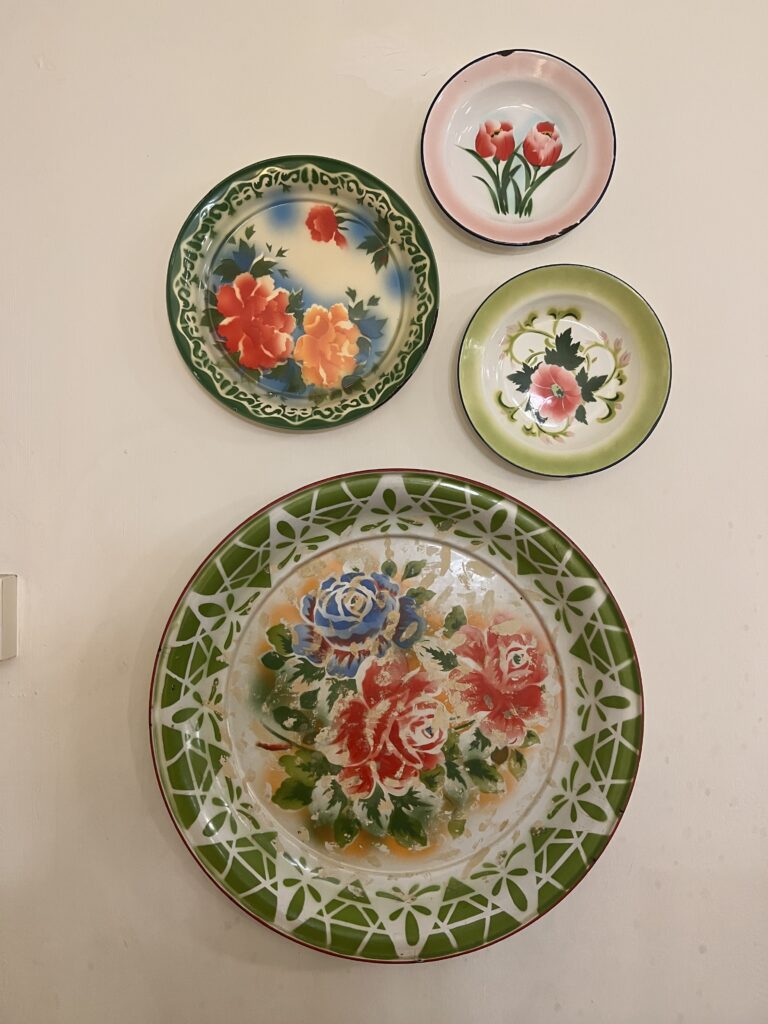
Jeffrey’s love for cooking and hosting sustains the stamina to open his home seven nights a week and two lunches over the weekend. Additionally, he takes advance orders for delivery. You can dine in your own home with your own party, but half the fun is exploring your way to Jeffrey’s home and experiencing the comfortable, inviting ambience. You might never want to leave but will suddenly remember that the host and his wife and helpers have to conserve their energy for the next day, and the next. So best out at 10pm just to be polite.

His spice pastes are never kept for too long (no more than two to three days) and he prepares his evening dishes at least two hours in advance of serving, for the flavours to meld together. We dined on the “basic” menu but I added on dishes I wanted to explore.
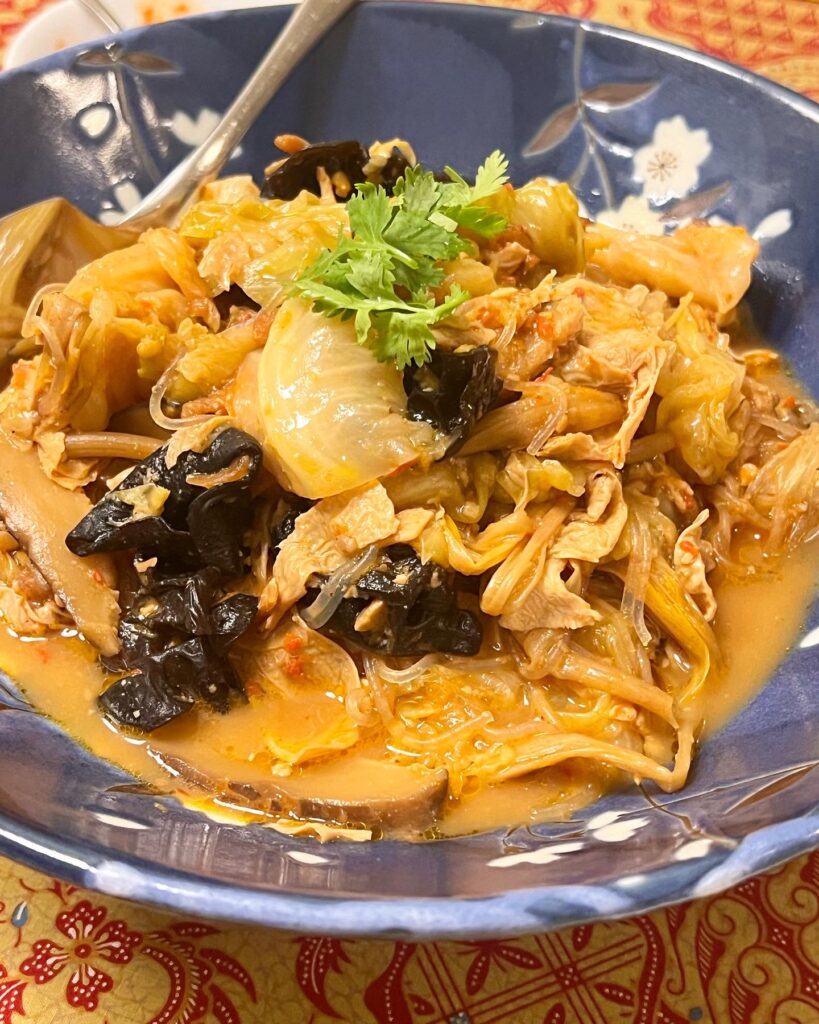
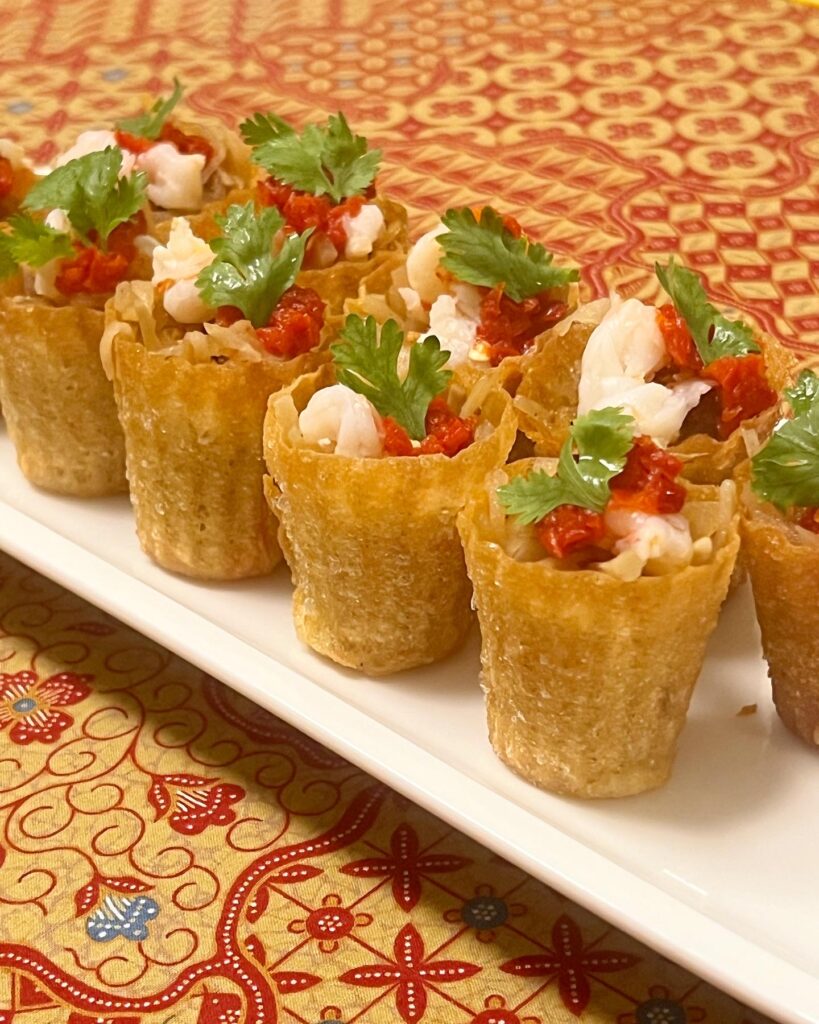
Kueh Pie Tee may all seem standard fare these days, particular the filling. What sets these apart are the home-fried shells which I like to think mine resemble a bit. The coarser, crispy texture with bigger pores are a tell-tale sign that these shells are produced in smaller batches. There is something special when you crunch into a home-made shell, knowing the labour involved in frying them one by one in the humid climate.
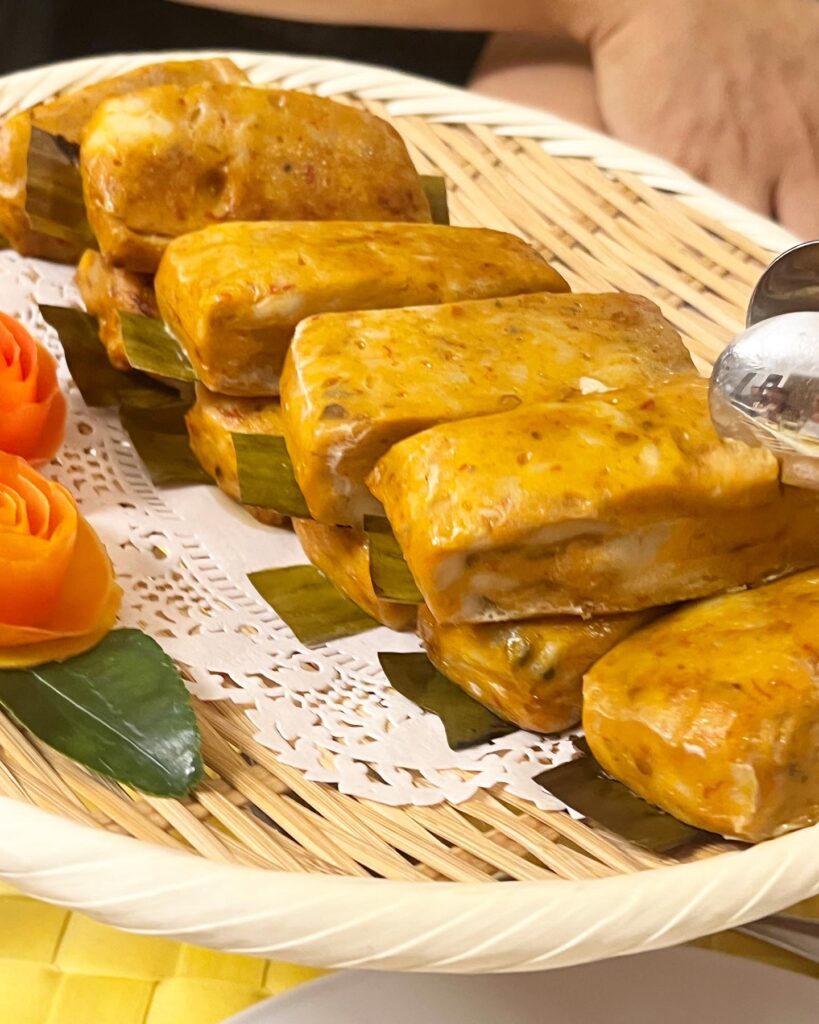
Everyone raved about the Otak Otak which was smooth, balanced in its spice medley and which retained the right firmness. Jeffrey probably does not grill them. (He had instructed me to pan-fry my take-home pieces on a skillet, banana leaves intact.) That is a great tip as you can control the heat so as not to overcook the Otak Otak and thus rubberize it.
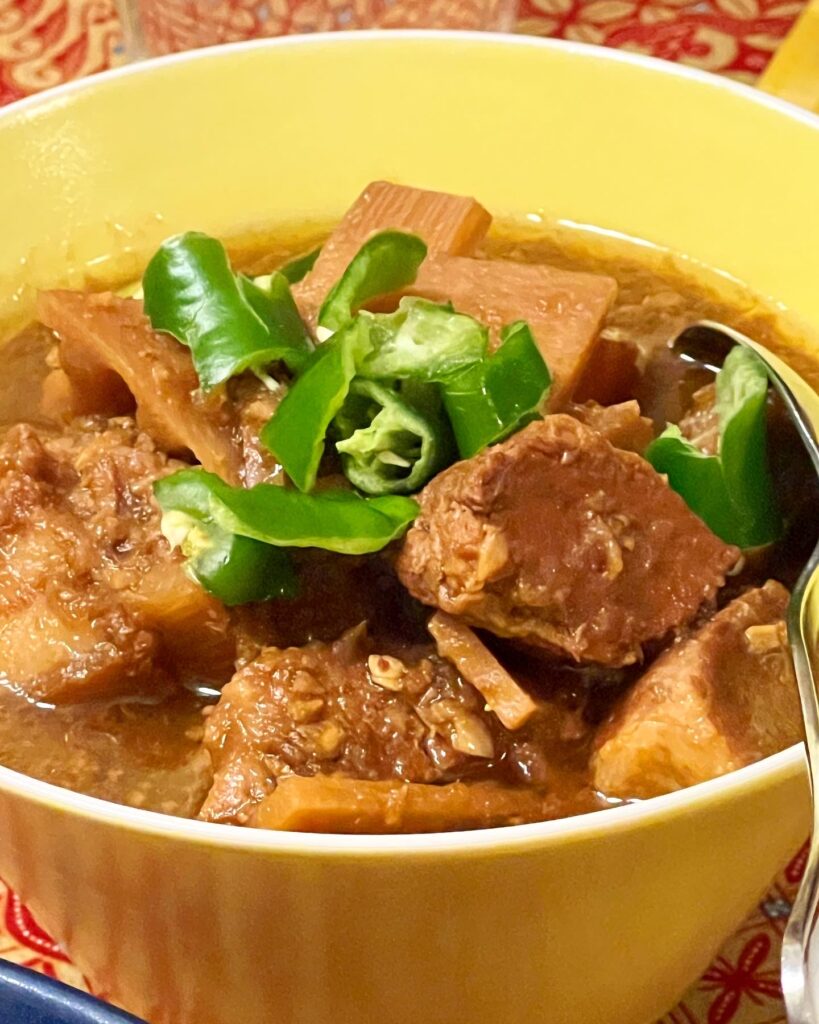
Babi Pongteh was delicious and will be a benchmark for me, with its tender morsels of simmered pork. There were thin slices of sugarcane in addition to the mushrooms, potatoes and bamboo shoots, to lend a hint of natural sweetness. The green chilli garnish must be torn, not sliced, to unleash the chemicals organically.
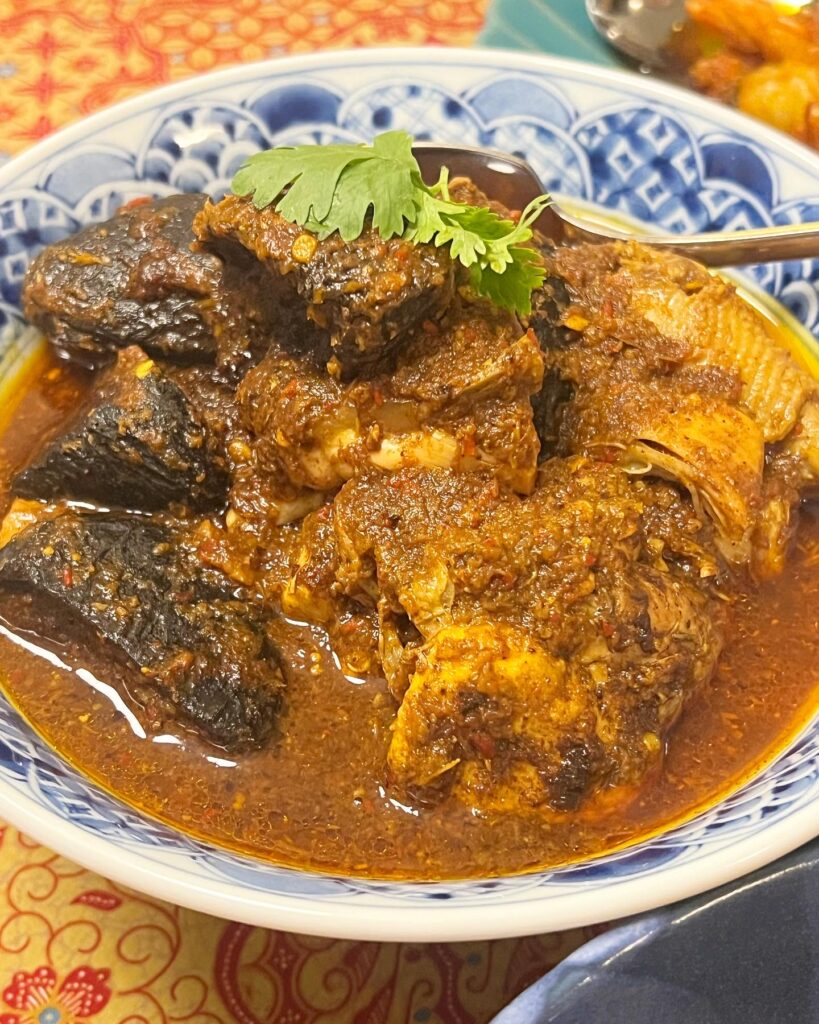
Buah Keluak differed from mine in that Jeffrey’s filling is purely the pulp from the shelled nut, refined to a smoother, softer paste and tucked back into the shells which had uniformly trimmed and smooth-edged openings. He orders an insane 5000 nuts from a wholesaler who sends over a batch of that order each week. These nuts are the “top shelf” ones. In short, he gets his pick. Jeffrey’s Buah Keluak contains pork alongside chicken. This adds a richer layer to an already complex dish. He also later explained that adding pork and prawn mince to the pulp filling was a way to “stretch” the content, especially when it was necessary to serve up this favourite dish within a large family. It is perhaps analogous to Yorkshire Pudding making up for the smaller portion of a roast. That said, my family recipe contains the minced pork and prawn to add to the filling. Just another indication of how in Peranakan families, no two recipes for the same dish are ever identical. Everyone has a different personal reason for a dish.
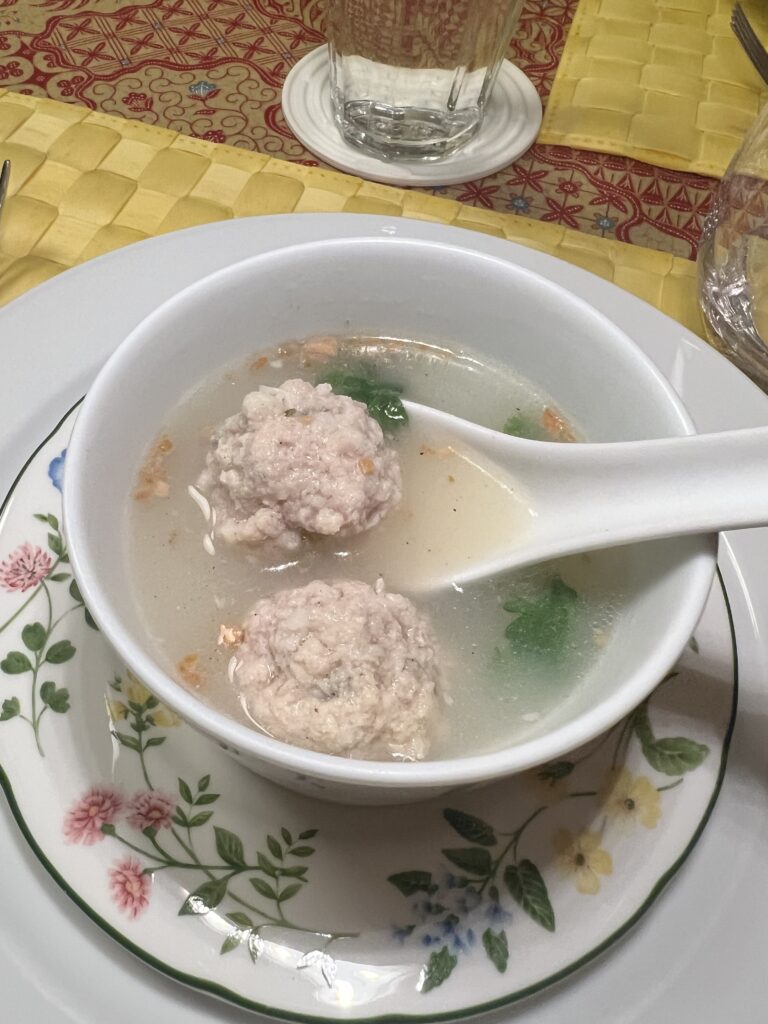
The Bakwan Kepiting soup came in a “collagen broth” brewed over 10 hours, served up with delicate meatballs. This collagen description is a trendy practice I have heard at other Peranakan establishments – spearheaded by a few who have also dined at Nonya Bong. Yet, I don’t think our Nonya matriarchs of old ever conscientiously applied the concept of collagen, let alone knew the word.

Jeffrey had lived in Penang for a brief stint and offers some of his favourite Penang Peranakan dishes. I ordered Jiu Her, a predominantly vegetable dish with diced cuttlefish sneaked in, to be bundled in fresh lettuce smeared with a spot of Sambal Belachan, just like the way we would eat bulgogi.
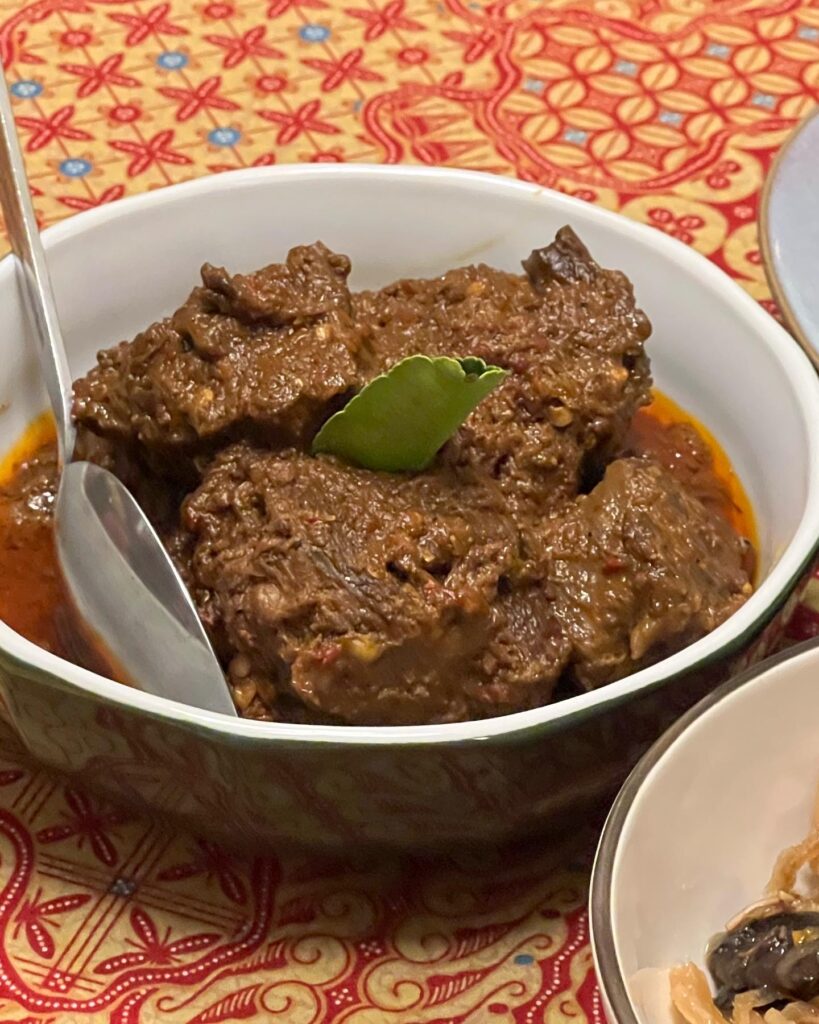
I was also curious about the Beef Rendang because I had just studied and written about Rendang. Like mine, Jeffrey’s Rendang has more gravy compared with the classic Minang version. He has a time-shortening method of boiling his beef and marrying the stock with the rempah paste in the next step. It makes sense for him when he needs to be efficient and cannot dedicate a stovetop burner to simmer this dish for hours. The dishes are accompanied by a tasty and addictive Sambal Belachan as well as Chinchalok (fermented krill). Jeffrey wisely does not provide Achar pickles – moreish to eat but painstaking to prepare. The crowning spectacle at the end was the famous Sago dessert. It is undeniably a video-worthy conclusion that features on Instagram almost every week. Jeffrey drizzled a syrup of Gula Asli which is less adulterated than Gula Melaka. The coconut milk is cold-pressed and has a clean, almost skim taste. He kindly volunteered a tip on how to finish the sago pearls to prevent clumping. The dessert is more convenient to prepare, yet ends off the meal in style and provides a refreshing balance over starchy kuehs and creamy cakes. Smart.
Would I go back again? Yes. I was half-joking that I would reserve Nonya Bong like I schedule my annual medical checkup – a year in advance and around the same time each year. Why? There are other dishes to discover. By studying other home-cooked renditions and understanding why others like his food, by conversing with him and learning his tips, I teach myself to be open-minded. I learn new facts and cooking anecdotes. I will record some of these for posterity if not to share publicly, at least to further my own techniques. It is the complete antithesis of the Baba who would say “My mama did it this way and it is the best!”. Jeffrey did not cut it that way for me. He graciously shared some of his cooking insights and his mother’s practices. He was humble and unassuming about his fame. He was just plain nice. For that, I admire and respect him.
